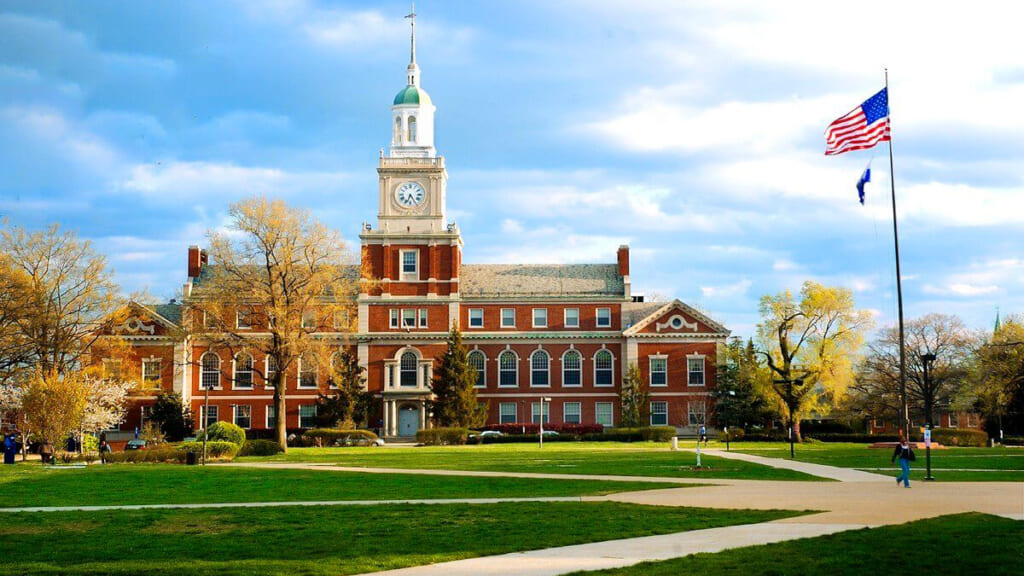Biden’s climate agenda targets Black America with innovation, HBCU funding
Exclusive: The Biden-Harris administration is expanding electric vehicle power stations into Black neighborhoods and is investing in HBCU renewable energy research
The Biden administration is putting Black America at the center of the solution for climate change by expanding electric vehicle power stations into Black neighborhoods and dumping funds into HBCU renewable energy research.
This as President Joe Biden is set to tour a Ford Electric Vehicle facility Tuesday.
In an exclusive interview with theGrio, Energy Secretary Jennifer Granholm discussed this engagement as part of President Biden’s equity initiative that sparks tangible creativity and innovation from people who are not normally at the table or in the research lab.
Read More: Sen. Scott, Rep. Adams sponsor bipartisan bill to improve HBCU infrastructure

Granholm emphasized the cooperation with Historically Black Colleges and Universities (HBCUs).
“My first venture out in this COVID environment was to Howard University … it was to announce a $17 million opportunity at DOE [Department of Energy] offering to support college internships and research projects and opportunities and to bolster investment in underrepresented use in minority-serving institutions,” Granholm told theGrio.
Howard University, the alma mater of Vice President Kamala Harris, is currently conducting research on “converting fossil fuels to low cost hydrogen.”
That H-U team was awarded $400,000 for their energy research.

Granholm cited that there needs to be a community of diverse researchers. Her examples pointedly offer how discrimination slows down progression in advancements.
“If you don’t have diverse researchers at the table, your research product, whatever it is, is going to not be as effective. So, for example, when we have all this face recognition software out there, all this artificial intelligence, well, they’re the way MIS identifies African-American faces, especially in law enforcement,” says Granholm.
“Well, if you have more people of color who are on the teams doing the development of that software and that technology, then you will not have that problem. When cars first got seatbelts, they were made for male bodies and women got more and more injured in crashes as a result.
She added, “we have to have diverse participation in the design of these products and the research of them. And that’s why we need to increase the diversity in our laboratories, but of our stem, our science, technology, engineering and math workforce.”

The Biden infrastructure plan includes a clean energy switch to electric vehicles and builds 500,000 charging stations in urban and rural areas as it simultaneously rebuilds America’s workforce. But there’s a glaring racial gap when it comes to ownership of energy-friendly electric vehicles. A 2021 paper published by the International Council on Clean Transportation, cites that Black and Latino car buyers make up 41% of traditional gasoline vehicle purchases, but only 12% of electric vehicle purchases.
Gina McCarthy, the Biden administration’s National Climate Advisor said, “We need them available [electric vehicle power stations] to everybody.”
McCarthy stresses “tax and consumer rebates” are also part of the plan to make this wave to the clean energy future affordable to all.

Another progressive piece to this bold puzzle, Granholm said, is that Justice40 investments “must go to communities who have disproportionately negatively experienced environmental pollution as a result of living on the fence line of smokestacks” and “where children can’t even breathe without an inhaler and communities that have felt and have been left behind by markets, for example, coal and power plant communities that have seen the market turn in different directions and are without jobs.”
Justice40 is an initiative that directs 40% of the clean energy investments to underserved community.
McCarthy supports Granholm saying, “you’re going to see more minority businesses actually getting federal business moving forward.You are going to see us investing in the communities that need those investments first.”
Under the American Rescue Plan umbrella, the Biden administration plans to offer contracts to a more diverse group of companies supporting environmental justice through Justice40.
Meanwhile, as the search for clean energy continues, the nation is working through its current issues of a gasoline shortage after a cyberattack on Colonial Pipeline, which is the largest pipeline system for refined oil products in the United States.

As of last Thursday when we interviewed Secretary Granholm she said, “by the end of the weekend, the vast majority of gas stations will have gasoline.”
However, there could be some isolated cases in rural areas that don’t have gasoline for the moment.
The pipeline extends 5,500 miles long and gasoline moves in a pipeline very slowly, Granholm pointed out.
The disruption created desperation and panic with the shutdown, however, Granholm assured that the gasoline would begin to move out of that line from Texas to the North East.
Have you subscribed to theGrio’s “Dear Culture” podcast? Download our newest episodes now!
TheGrio is now on Apple TV, Amazon Fire and Roku. Download theGrio.com today!
